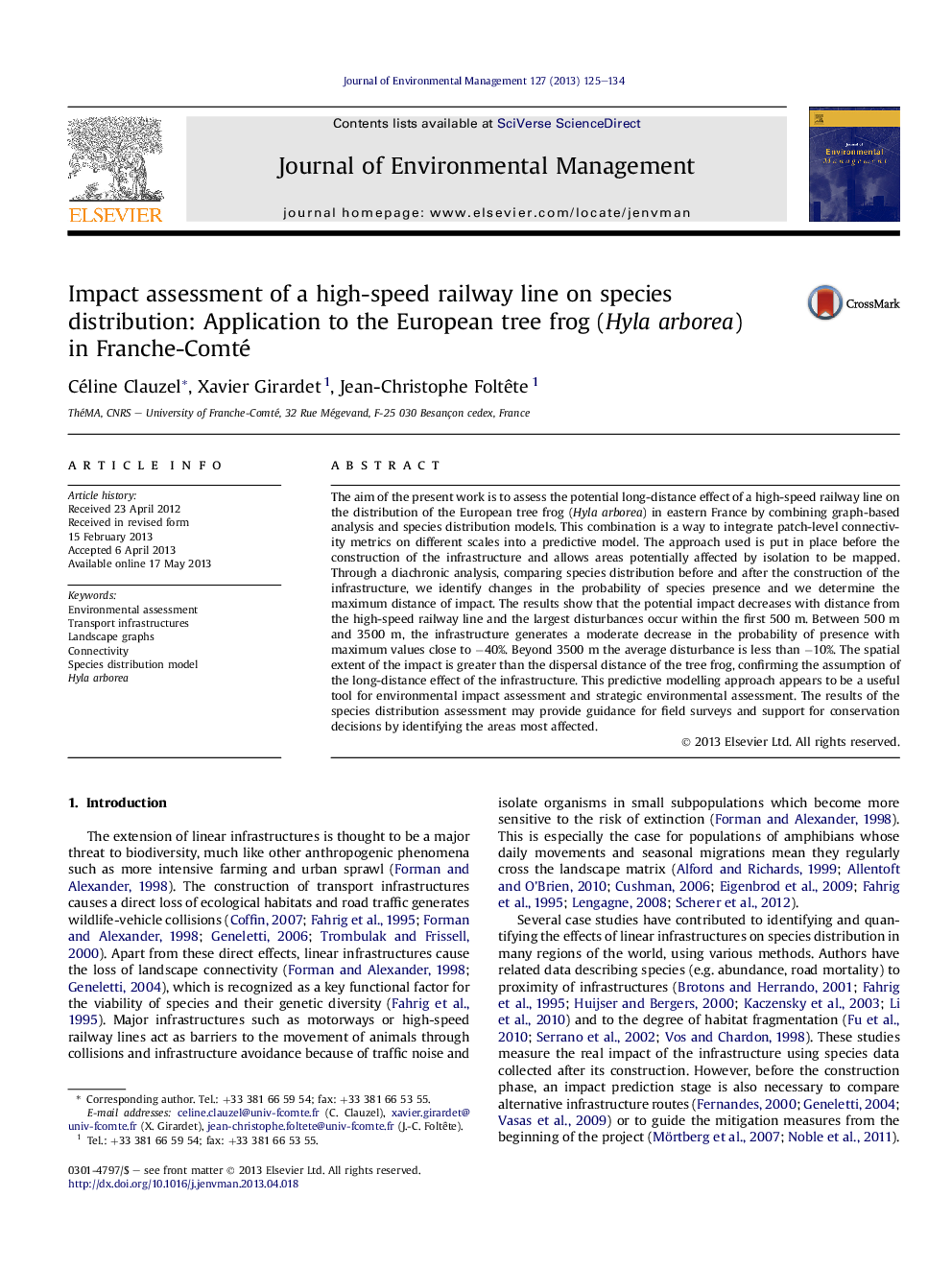| Article ID | Journal | Published Year | Pages | File Type |
|---|---|---|---|---|
| 1056014 | Journal of Environmental Management | 2013 | 10 Pages |
•The impact of an infrastructure on species distribution was assessed using a graph-based approach.•Species distribution was modelled before and after the infrastructure was constructed.•The diachronic analysis confirms the potential long-distance effect of the infrastructure.•The results may guide field surveys and improve conservation policies.
The aim of the present work is to assess the potential long-distance effect of a high-speed railway line on the distribution of the European tree frog (Hyla arborea) in eastern France by combining graph-based analysis and species distribution models. This combination is a way to integrate patch-level connectivity metrics on different scales into a predictive model. The approach used is put in place before the construction of the infrastructure and allows areas potentially affected by isolation to be mapped. Through a diachronic analysis, comparing species distribution before and after the construction of the infrastructure, we identify changes in the probability of species presence and we determine the maximum distance of impact. The results show that the potential impact decreases with distance from the high-speed railway line and the largest disturbances occur within the first 500 m. Between 500 m and 3500 m, the infrastructure generates a moderate decrease in the probability of presence with maximum values close to −40%. Beyond 3500 m the average disturbance is less than −10%. The spatial extent of the impact is greater than the dispersal distance of the tree frog, confirming the assumption of the long-distance effect of the infrastructure. This predictive modelling approach appears to be a useful tool for environmental impact assessment and strategic environmental assessment. The results of the species distribution assessment may provide guidance for field surveys and support for conservation decisions by identifying the areas most affected.
